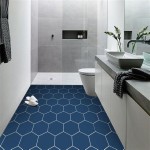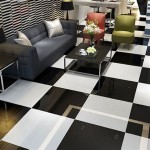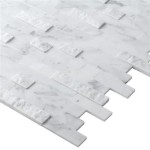Best Rugs for Marble Floors: Enhancing Aesthetics and Protection
Marble floors exude an undeniable air of sophistication and timeless elegance. Their smooth, cool surface and intricate veining patterns add a touch of luxury to any space. However, the inherent characteristics of marble, such as its susceptibility to scratches, stains, and temperature fluctuations, necessitate careful consideration when selecting rugs. Choosing the appropriate rug not only complements the marble's aesthetic appeal but also provides essential protection and enhances the overall comfort of the room. This article explores the critical factors in selecting the best rugs for marble floors, emphasizing materials, construction, style, and practical considerations.
Understanding Marble Floor Care and Rug Selection
Before delving into the specific types of rugs suitable for marble, understanding the unique properties of marble is crucial. Marble is a porous stone, making it vulnerable to staining from spills and acidic substances. Its smooth surface can also be easily scratched by abrasive materials. Furthermore, marble can feel quite cold underfoot, especially during colder months. Therefore, the primary objectives in selecting a rug for marble floors are to provide a protective barrier, add warmth and comfort, and complement the existing décor without damaging the marble surface.
The rug's backing is a vital consideration. Avoid rugs with stiff or abrasive backings that can scratch the marble. Instead, opt for rugs with soft, non-abrasive backings made of materials like felt, cotton, or natural rubber. A rug pad is highly recommended, regardless of the rug's backing. Rug pads provide an additional layer of cushioning, prevent the rug from slipping, and protect the marble surface from potential scratches and stains. Furthermore, rug pads facilitate air circulation, preventing moisture buildup underneath the rug, which can lead to discoloration or damage to the marble. Regular cleaning and maintenance of both the rug and the marble floor are essential to preserve their beauty and longevity.
Key Considerations When Choosing Rug Materials
The material of a rug plays a significant role in its durability, appearance, and suitability for marble floors. Several materials are particularly well-suited for use on marble, each offering unique benefits and characteristics.
Wool:
Wool rugs are a classic and durable choice for marble floors. Wool is a natural fiber known for its resilience, stain resistance, and ability to retain its shape. Wool rugs provide excellent insulation, adding warmth and comfort to the cool marble surface. Their natural lanolin content helps repel dirt and moisture, making them relatively easy to clean. However, some coarser wool rugs may shed initially, and they can be more expensive than synthetic options.Silk:
Silk rugs are the epitome of luxury and elegance. Their shimmering texture and vibrant colors add a sophisticated touch to any room. Silk rugs are incredibly soft and smooth underfoot, providing a luxurious feel. However, silk is a delicate material that requires professional cleaning and is not suitable for high-traffic areas or homes with pets or children. Due to their delicate nature, silk rugs are best suited for formal living rooms or bedrooms where they will receive minimal wear and tear.Cotton:
Cotton rugs are a versatile and affordable option for marble floors. Cotton is a natural fiber that is soft, absorbent, and easy to clean. Cotton rugs are available in a wide range of colors, patterns, and styles, making them easy to incorporate into any décor. They are also relatively lightweight, making them easy to move and clean. However, cotton rugs are less durable than wool or silk and may fade or shrink with repeated washing. They also lack the inherent stain resistance of wool and may require more frequent cleaning.Synthetic Fibers (Nylon, Polypropylene):
Synthetic rugs offer a practical and durable alternative to natural fibers. Nylon and polypropylene rugs are stain-resistant, fade-resistant, and easy to clean, making them ideal for high-traffic areas or homes with pets or children. They are also generally more affordable than natural fiber rugs. Synthetic rugs come in a wide variety of styles and colors, mimicking the look and feel of natural fibers. However, they may not have the same luxurious feel as wool or silk and can generate static electricity. When choosing synthetic rugs, prioritize those with softer backings to protect the marble surface.Jute and Sisal:
Jute and sisal rugs are made from natural plant fibers and offer a rustic and textured look. They are durable and relatively affordable, making them a popular choice for casual living spaces. However, jute and sisal rugs can be coarse and may not be as comfortable underfoot as wool or cotton. They are also prone to staining and may require special cleaning. It's important to use a rug pad with jute or sisal rugs to prevent scratching the marble floor. Furthermore, ensure the jute or sisal used in the rug is treated to prevent shedding and disintegration over time.Style, Size, and Placement: Enhancing the Room's Aesthetics
Selecting the right rug style, size, and placement is essential for enhancing the overall aesthetics of the room and complementing the marble floor. The rug should complement the existing décor, adding visual interest and defining the space.
Style Considerations:
Consider the overall style of the room when choosing a rug. For a traditional setting, opt for classic patterns like Persian, Oriental, or floral designs. For a modern or contemporary space, choose geometric patterns, abstract designs, or solid-colored rugs. Consider the color palette of the room and select a rug that complements the existing colors without overwhelming the space. A rug can serve as a focal point, incorporating bold colors and patterns, or it can blend seamlessly with the existing décor, adding subtle texture and warmth.Size and Proportion:
The size of the rug is crucial for creating a balanced and harmonious space. A rug that is too small can make the room feel disjointed, while a rug that is too large can overwhelm the marble floor. In living rooms, a rug should ideally be large enough to anchor the furniture, with the front legs of the sofas and chairs resting on the rug. In bedrooms, the rug should extend beyond the sides and foot of the bed. In dining rooms, the rug should be large enough to accommodate all the chairs when they are pulled out from the table. Leaving a border of exposed marble floor around the edges of the rug allows the beauty of the marble to shine through and prevents the room from feeling too cluttered.Placement Strategies:
The placement of the rug can significantly impact the overall feel of the room. In open-concept spaces, rugs can be used to define different zones, such as a living area, dining area, or reading nook. Strategically placed rugs can also help to visually elongate or widen a room. For example, a rectangular rug placed lengthwise in a narrow hallway can make it appear longer. In areas with high foot traffic, consider placing a runner rug to protect the marble floor from wear and tear. In areas where spills are likely, such as near a dining table or in a kitchen, choose a rug that is stain-resistant and easy to clean.Rug Pads: An Essential Investment:
Irrespective of the rug material or style, a high-quality rug pad is an essential investment for marble floors. Rug pads provide a cushiony layer that protects the marble from scratches and dents caused by furniture or foot traffic. They also prevent the rug from slipping, reducing the risk of accidents. Furthermore, rug pads improve air circulation, preventing moisture buildup and promoting a healthier indoor environment. Choose a rug pad that is specifically designed for use on hard surfaces like marble, with a non-slip backing that will grip the floor without damaging it. Regular cleaning of the rug pad is also important to maintain its effectiveness and prevent the buildup of dirt and allergens.Rotating Rugs for Even Wear:
Regular rotation of rugs helps distribute wear evenly and prolong their lifespan. Rotating the rug every few months prevents certain areas from being subjected to excessive foot traffic and sunlight, which can lead to fading or damage. This practice is particularly important for rugs made from natural fibers, such as wool or silk, which are more susceptible to wear and tear.Professional Cleaning and Maintenance:
Regular vacuuming is essential for keeping rugs clean and free from dirt and debris. Use a vacuum cleaner with a brush attachment to gently remove surface dirt and dust. Avoid using harsh chemicals or abrasive cleaners, as these can damage the rug fibers. For deep cleaning, consider hiring a professional rug cleaning service that specializes in cleaning delicate rugs. Professional cleaners have the expertise and equipment to safely and effectively remove stains and dirt without damaging the rug. Spot clean spills immediately with a clean, absorbent cloth, blotting gently to avoid spreading the stain. Prompt attention to spills can prevent permanent staining and preserve the beauty of the rug.By carefully considering these factors and selecting the appropriate rug, homeowners can enhance the beauty and functionality of their marble floors while ensuring their long-term protection and preservation. The right rug not only adds warmth, comfort, and style to the room but also safeguards the marble surface from damage, ensuring that it remains a timeless and elegant feature of the home for years to come.

Trendy Rug Style And Design Ideas That Best Suits Marble Floor Of Your Villa Ajmanproperties

The Best Modern Rugs To Match With Marble Furniture

When And Where Can Marble Floors Become An Elegant Design Feature

When And Where Can Marble Floors Become An Elegant Design Feature

The Best Modern Rugs To Match With Marble Furniture

Best Area Rugs For Hardwood Floors Luxe Weavers

The Best Area Rugs To Decorate Opulent Empire Penthouse

26 Best Living Room Rug Ideas Area Design

What Type Of Carpet Is Best For Office Tsar Carpets

What Is The Best Marble Mat And Floor Tile







